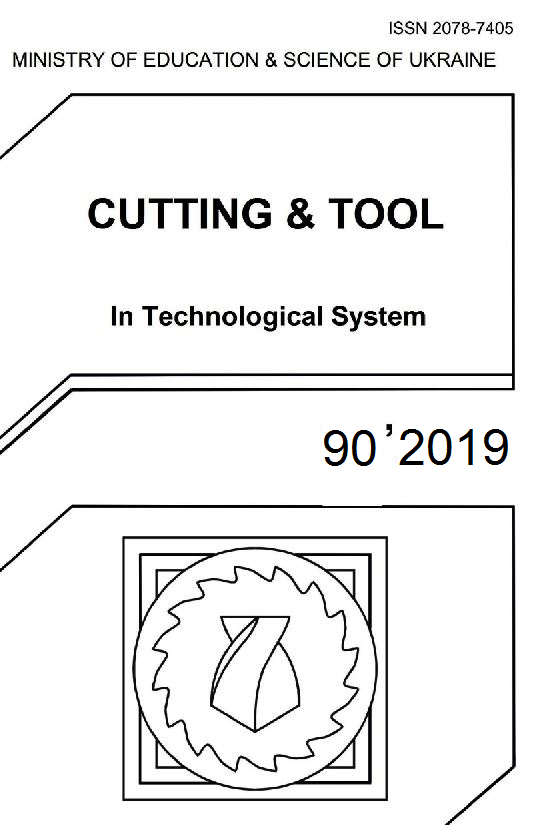INVESTIGATION OF SURFACE ROUGHNESS CHARACTERISTICS OF FACE MILLING
DOI:
https://doi.org/10.20998/2078-7405.2019.90.08Keywords:
face milling, cutting forces, depth of cut, cutting speed, rectangular inserts.Abstract
Surface quality and accuracy affect the integrity and lifetime of machine parts and the operational requirements of the structural (or assembly) units. These are the reasons that the expected surface roughness must be planned based on the operational requirements of the parts. The path of the tool edge, which is defined by the characteristics of the kinematics of face milling, makes the milled surface inhomogeneous, which means the roughness analysis in various directions gives different values. In this paper the effect of increasing the feed rate on surface roughness is investigated. This cutting data is chosen because increasing the feed rate is an effective way to increase productivity.References
Mansour, A., Abdalla, H.: Surface roughness model for end milling: a semi-free cutting carbon casehardening steel (EN32) in dry condition, Journal of Materials Processing Technology 124 (2002) pp.183-191;
Sheth, S., George, P.M.: Experimental Investigation and Prediction of Flatness and Surface Roughness during Face Milling Operation of WCB Material, Procedia Technology 23 (2016) pp.344-351;
Liu, G., Huang, C., Zhu, H., Liu, Z., Liu, Y., Li, C.: The modified surface properties and fatigue life of Incoloy A286 face-milled at different cutting parameters, Materials Science & Engineering A 704 (2017) pp.1-9;
Baek, D.K., Ko, T.J., Kim, H.S.: Optimization of feedrate in a face milling operation using a surface roughness model, International Journal of Machine Tools & Manufacture 41 (2001) pp.451-462;
Ozcelik, B., Bayramoglu, M.: The statistical modeling of surface roughness in high-speed flat end milling, International Journal of Machine Tools & Manufacture 46 (2006) pp.1395-1402;
Zhao, G., Guo, Y.B., Zhu, P., Zhao, Y.: Energy Consumption Characteristics and Influence on Surface Quality in Milling, Procedia CIRP 71 (2018) pp.111-115;
Kundrák, J., Felhő, C.: Investigation of the topography of face milled surfaces, Materials Science Forum 919 (2018) pp.78-83;
Felho, C.; Kundrak, J.: Effects of Setting Errors (Insert Run-Outs) on Surface Roughness in Face Milling When Using Circular Inserts, Machines vol.6 issue:2 (2018) Article Number: 14.;
European Steel and Alloy Grades/Numbers, C45, http://www.steelnumber.com/en/steel_composition_eu.php?name_id=152;
Felho, C., Karpuschewski, B., Kundrák, J.: Surface roughness modelling in face milling, Procedia CIRP 31 (2015) pp. 136-141;
Shaw, M.C.: Metal Cutting Principles. Calendron Press, Oxford. 1984.
Downloads
Published
Issue
Section
License
Copyright Notice
Authors who publish with this Collection agree to the following terms:
1. Authors retain copyright and grant the Collection right of first publication with the work simultaneously licensed under a Creative Commons Attribution License that allows others to share the work with an acknowledgement of the work's authorship and initial publication in this Collection.
2. Authors are able to enter into separate, additional contractual arrangements for the non-exclusive distribution of the Collection's published version of the work (e.g., post it to an institutional repository or publish it in a book), with an acknowledgement of its initial publication in this Collection.
3. Authors are permitted and encouraged to post their work online (e.g., in institutional repositories or on their website) prior to and during the submission process, as it can lead to productive exchanges, as well as earlier and greater citation of published work.

